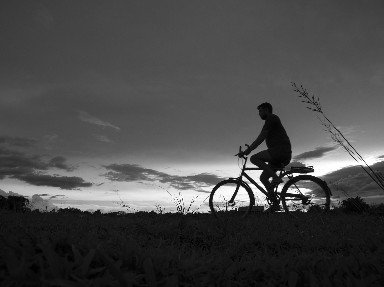Quiz Answer Key and Fun Facts
1. One of the most prominent predecessors of the modern bicycle is known as the draisine, draisienne or dandy horse. Which hapless German inventor is credited with the creation of the draisine in 1817?
2. The draisine was somewhat impractical as it required one to run on the ground to propel it forward. In around 1863, Pierre Lallement invented an altered version of the draisine. Still seen on modern bicycles, what enduring addition did he make to the draisine to improve its efficiency?
3. Shortly after improving the draisine, Lallement sold the design onto the Olivier brothers who collaborated with blacksmith Pierre Michaux to make the first ever mass-produced bicycle. What name did the British give this cast-iron framed bicycle due to its quality of providing a bumpy ride?
4. In 1869, Eugene Meyer developed a type of bicycle with a large front wheel and short back wheel. After adjustments for comfort and practical use by British engineers, this new popular form of transport for young men was given the nickname of the 'penny-farthing'. For what reason was this name coined?
5. Unfortunately, the penny-farthing was quite dangerous as it was impossible to dismount it safely at high speeds, and was impractical for use by women and older men. In the 1880s, however, bicycles were designed to have equal-level wheels, connect the pedals with a chain and used a diamond frame, which helped to ameliorate these problems. What appropriate name is given to this type of bicycle?
6. One problem still remained with the bicycle, however; the ride was still bumpy and uncomfortable. Which prominent invention did John Dunlop air in 1888 to smooth out the bicycle ride?
7. After being adjusted for safety, comfort and practical use, the bicycle became ever more popular, especially with a seemingly unlikely group of whom Susan B. Anthony was a prominent member. Which significant cultural group believed the bicycle helped give them a feeling of freedom and self-reliance?
8. Although at the turn of the 20th century automobiles began to beat bicycles in the popularity stakes, bicycles have always kept a place in our collective hearts. Which of these reasons have been given for the continued use of bicycles?
9. Bicycles have also been customised and specialised to fit a particular niche or purpose. Reducing strain on the neck and back in comparison to a regular bicycle, which type of bicycle places its rider in a laid-back position?
10. Bicycling has also become a competitive sport out of love, money or glory. Making its debut as an Olympic event in 2000, which wonderfully eccentric cycling sport of Japanese origin involves closely tracking a pacer - typically a motor-assisted cyclist - round a track for several laps and then racing to the finish line once the pacer leaves?
Source: Author
malik24
This quiz was reviewed by FunTrivia editor
stedman before going online.
Any errors found in FunTrivia content are routinely corrected through our feedback system.
